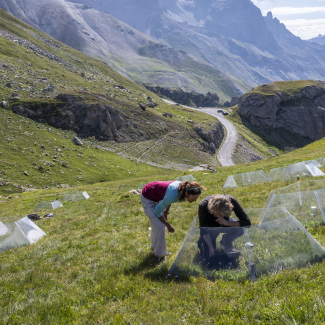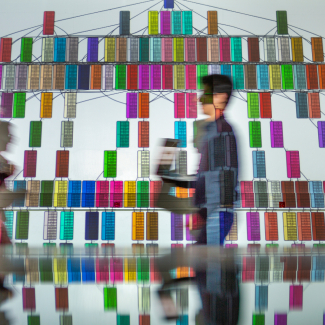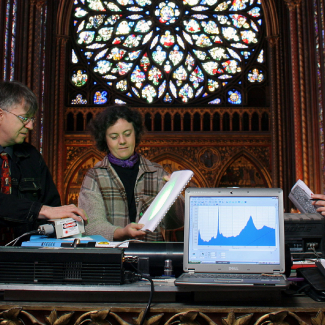
Distinctions
Every year the CNRS rewards the women and men who have contributed most significantly to raising the organisation's profile and advancing French research and innovation.
The CNRS medals
Being awarded a CNRS medal is a great moment of recognition that honours those who contribute to the vibrancy and renown of the organisation in terms of research and innovation and also through their support for research.
The gold medal
Created in 1954, the purpose of the gold medal is to recognise the whole body of work of a scientist who has made an exceptional contribution to extending the influence of French research. This award is one of the highest honours in science.
The innovation medal
Created in 2011, the innovation medal honours those women and men whose exceptional research has led to a significant technological, therapeutic or social innovation that raises the profile of French scientific research.
The scientific mediation medal
The scientific mediation medal recognises scientists and research support staff for individual or collective actions, either on a specific project or their ongoing work, which highlight the value of science to society and help disseminate scientific information and knowledge beyond the walls of their laboratories.
The silver medal
The silver medal honours researchers for the originality, quality and importance of a body of work that is recognised nationally and internationally.
Discover the CNRS 2025 silver medals
The bronze medal
The bronze medal rewards researchers in the early stages of their career whose work has established them as specialists in their field. This award is a form of encouragement from the CNRS to continue with ongoing research that has already proved successful.
Discover the CNRS 2025 bronze medals
The crystal medal
The crystal medal recognises research support staff working alongside researchers whose creativity, technical mastery and sense of innovation has contributed to expanding knowledge and to excellence in French research.
Discover the CNRS 2025 crystal medal
The collective crystal award
The collective crystal award honours teams of research support staff who have carried out projects with outstanding technical mastery, a collective dimension, applications, innovation and influence. This award has two categories: “direct support for research” and “research backup”.
Fellows-ambassadors
Through the selective "Fellow Ambassadors" program, created in 2023, eminent figures in global research, including several Nobel Prize winners, become CNRS ambassadors, promoting its influence. These prestigious and high-level researchers also boost French research: for three years, they come to work for extended periods in one or more laboratories in France. The objective: for French communities to develop strong, long-term ties with these internationally recognized scientists, structuring their research.
2025-2027
Emmanuelle Charpentier, biochemistry, Germany
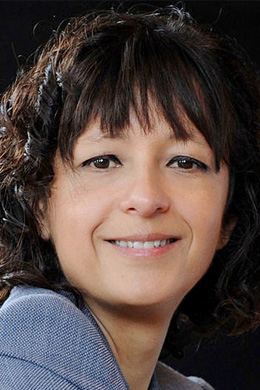
Emmanuelle Charpentier studies the molecular mechanisms that govern the regulation of gene expression by microbial RNA along with the molecular basis of infectious processes. Her research also focuses on the molecular strategies implemented by bacteria to counter the invasion of pathogens. Ms Charpentier's fundamental work on the identification and detailed characterisation of the CRISPR/Cas9 bacterial immune system has earned her international recognition. She also worked in collaboration with the American biochemist Jennifer Doudna to develop the CRISPR/Cas9 genome editing technology, a major step forward in the field of genetic engineering for therapeutic purposes. Her discoveries have been recognised by many prestigious awards including the Nobel Prize in Chemistry in 2020. She has also directed the Max Planck Research Center for Pathogen Science in Germany since 2018.
Sandra Díaz, ecology, Argentina
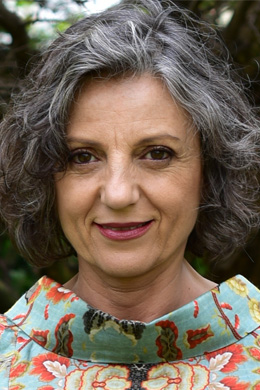
A professor at the Universidad Nacional de Córdoba in Argentina, Sandra Díaz is an internationally renowned ecologist. A specialist in plant community ecology, she studies the links between the diversity of plant functions, ecosystems, and the benefits provided by nature. Her interdisciplinary work integrates both the life sciences and the societal dimensions of the relationship between humans and nature. Sandra Díaz is also a senior principal investigator at the National Council for Scientific and Technical Research (CONICET) in Argentina. She was a co-chair of the Global Assessment on Biodiversity and Ecosystem Services and a member of the Multidisciplinary Panel of Experts of the Intergovernmental Science-Policy Platform on Biodiversity and Ecosystem Services (IPBES). She regularly collaborates with CNRS scientists, particularly in Montpellier (such as Eric Garnier and Cyrille Violle) and Grenoble (such as Sandra Lavorel, who is the 2023 CNRS Gold Medal laureate). Nature magazine named her one of the "10 people who mattered to science" in 2019, and in 2025 she was the first winner of the Tyler Prize for Environmental Achievement with a South American nationality and affiliation. Sandra Díaz was also part of the international committee set up under the responsibility of HCERES, which evaluated the CNRS at the end of 2023.
Soeren Fournais, mathematics, Denmark
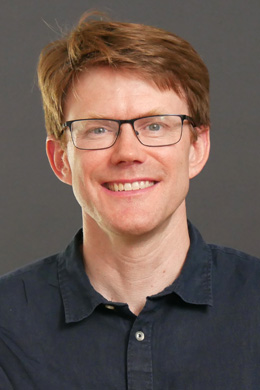
Soeren Fournais is a specialist in the mathematical aspects of quantum mechanics and a professor at the University of Copenhagen's Department of Mathematical Sciences. Between 2003 and 2006, he was a CNRS researcher and since 2014 has also been a member of the Royal Danish Academy of Sciences and Letters. Since 2023, he has led the MathBEC project which was awarded an ERC Advanced Grant for a five-year period. The project focuses on Bose-Einstein condensation, a phenomenon that occurs at extremely low temperatures and causes a large number of atoms to place themselves in the same fundamental quantum state of the lowest energy. This causes a 'condensate' to form – a 'fifth' state of matter that is neither liquid, gaseous, solid nor a plasma. The objective of the ERC project is to use mathematical equations to rigorously describe the formation of this condensation in a system consisting of a large number of interacting quantum particles.
Miroslav Krstic, automation, United States
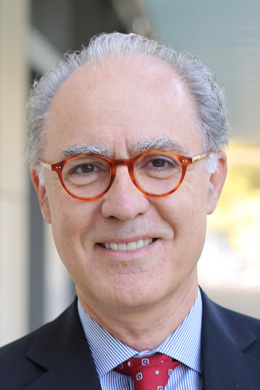
Mirsolav Krstic is an automation engineer who specialises in nonlinear systems – systems in which small changes to the initial conditions can lead to drastically different results – and the partial differential equations that represent them. His work in such areas has received significant international recognition through awards including the Bode Lecture Prize – the highest award from the IEEE Control Systems Society – in 2023, and the 2021 Richard E. Bellman Control Heritage Award which is the most important award for automation in the United States. He has also made notable contributions to so-called 'extremum-seeking' approaches that aim to identify the optimal operating point for nonlinear systems whose optimal state varies. An example of this is the optimal energy storage point on solar panels that function differently according to the sunlight, clouds crossing the sky and so on. His book Nonlinear and Adaptive Control Design is now a reference textbook for all young automation researchers. Mirsolav Krstic is currently Senior Associate Vice Chancellor for Research at the University of California in San Diego (UCSD).
Roger Reed, material sciences, United Kingdom
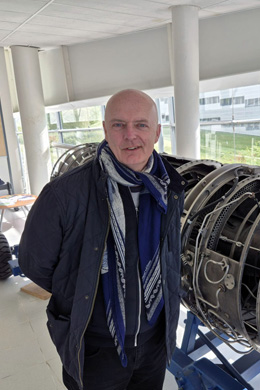
A professor at the University of Oxford, Roger Reed is a world-renowned expert in materials science, particularly the metallurgy and mechanical engineering of high-temperature alloys. He is well known for his research on nickel-based superalloys, which are essential for the manufacture and design of structures in many aeronautics and space applications. He is collaborating with French laboratories (and particularly ENSMA in Poitiers) on the question of the impact of corrosion on damage accumulation in these superalloys – a question with crucial application issues in terms of air safety and availability in service. He has been a member of the UK’s Royal Academy of Engineering since 2017, and has held a Royal Academy of Engineering Research Chair there since 2023. He is particularly well known for his promotion of collaborations between academia and industry. He is a passionate believer in science and engineering, and in particular its capacity to cultivate relationships between peoples and societies across the globe.
Yukari Takamura, law, Japan
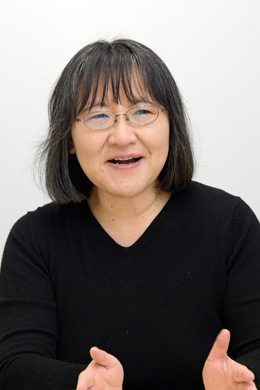
Yukari Takamura is a Professor at the Institute for Future Initiatives at the University of Tokyo. Her research focuses on international and environmental law and more specifically on legal and governance issues relating to multilateral environmental agreements as well as climate, energy and biodiversity laws and policies. She received the Minister of the Environment's Environmental Conservation Merit Award in 2018. She is a member of the Board of Directors of the Japanese Society for Environmental Economics and Policy Studies and of the Board of Executive Directors of the Japanese Society for Environmental Law and Policy Studies. Ms Takamura serves as member of governmental advisory bodies, including the Central Environmental Council of which she is President and the Tokyo Metropolitan Government's Environment Council. She is also a member of the Sustainability Standards Board of Japan (SSBJ) and the Asian Development Bank's (ADB) Advisory Group on Climate Change and Sustainable Development. From 2020 to 2023 she was vice-president of the Science Council of Japan (SCJ).
Mark E. Tuckerman, chemistry, United States
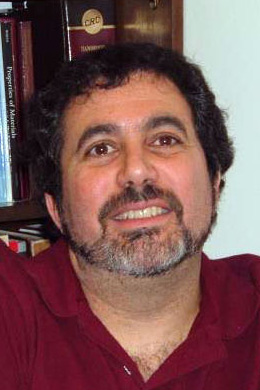
Mark E. Tuckerman is a Professor of Chemistry and Mathematics at New York University. His research covers multiple aspects of theoretical chemistry, ranging from molecular dynamics to ab initio molecular dynamics simulations, statistical mechanics and crystal structure prediction. His research focuses include the quantum effects of confinement, the conductivity of hydroxide ions in fuel cell membranes and the development of new multi-step algorithms that overcome resonance phenomena. Mr Tuckerman has authored nearly 200 publications and received numerous awards, including the Einstein Foundation Berlin's 2024 'Einstein Fellowship Award' and the Dreyfus Foundation's 2022 'Machine Learning in Chemical Sciences and Engineering Award'. He will be hosted in France at Professor Rodolphe Vuilleumier's Laboratoire du Chimie physique et chimie du vivant (CNRS/ENS - PSL/Sorbonne University).
Vincenzo Vitelli, physics, United States
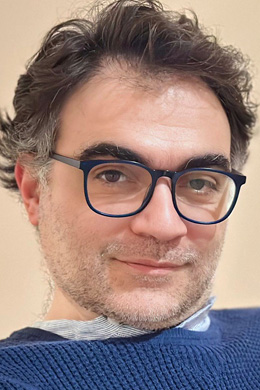
Vincenzo Vitelli is an internationally renowned theoretical physicist from the University of Chicago who works on statistical physics, soft matter and active matter. His research focuses on subjects at the interface between physical science, engineering and mathematics. Mr Vitelli takes a particularly interest in the use of sophisticated mathematical models to explain or suggest experiments. He has thus obtained important results in fields as diverse as metamaterials, information physics, liquid crystals, spin glasses and biophysics. His recent work includes studies on innovative materials, the hydrodynamics of complex matter, non-equilibrium systems and the mathematical modelling of biological systems and is of great interest to the French soft matter and active matter community. In 2024, he notably gave one of the prestigious Niels Bohr Lectures at the Niels Bohr Institute in Copenhagen and is also a Kavli Frontiers of Science Fellow and a Fellow of the American Physical Society.
Yifang Wang, particle physics, China
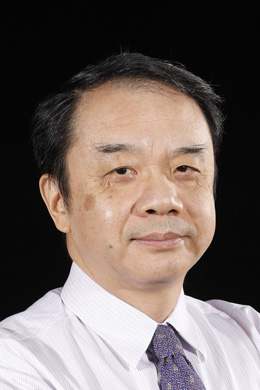
Yifang Wang is considered to be one of China's most prominent scientists for his outstanding contributions to particle physics. He is a professor at the Institute of High Energy Physics (IHEP) in Beijing, which he directed between 2011 and 2024. In particular, he proposed and designed the Daya Bay neutrino oscillation experiment in China, which measured for the first time in 2012 a fundamental parameter of neutrino physics – the mixing angle θ13. This parameter gives the probability of an electron neutrino oscillating towards a neutrino of another flavour. Today he leads of the JUNO experiment, which extends the Daya Bay experiment on a much larger scale and with a greater precision. For this experiment, to which CNRS contributes, he has developed innovative photomultipliers to detect the very weak light signals produced by the rare interactions between neutrinos and JUNO. Winner of numerous national and international prizes (including the Fundamental Physics Breakthrough Award 2016), he is a member of the Chinese Academy of Sciences and, in April 2024, was admitted as an international member of the US Academy of Sciences.
2024-2026
Chihaya Adachi, organic photonics and electronics, Japan
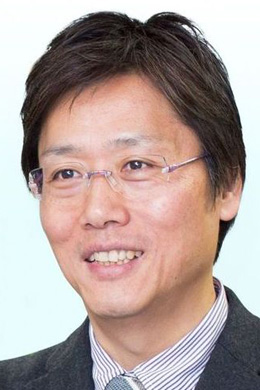
Chihaya Adachi is a Professor at Kyushu University in Japan, and Director of the Centre for Organic Photonics and Electronics Research (OPERA). His work focuses on chemistry, physics, and the development of organic semiconducting materials for applications in organic photonics and electronics. He was notably behind the development of the third generation of electroluminescent diodes (OLED) made from organic materials with thermally activated delayed fluorescence (TADF). Adachi has close ties with industry and has cofounded two start-ups: Kyulux in 2014, to develop and market new materials for the OLED market; and Koala Tech in 2019, to develop purely organic laser materials and devices. He has also developed numerous international collaborations, especially with France. Since 2023 he has co-directed, along with Fabrice Mathevet (Paris Institute of Molecular Chemistry), the LUX ERIT International Research Project on organic semiconductors for applications in photonics and optoelectronics.
Emmanuel Boss, oceanography, United States
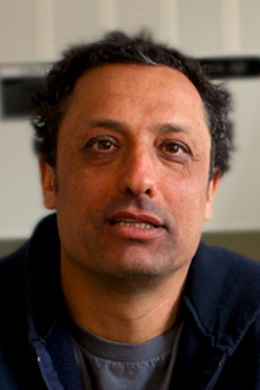
Emmanuel Boss has served as Professor of Oceanography at the University of Maine in the United States since 2002. After earning a Master’s degree in oceanography in Jerusalem, he completed a PhD on the large-scale modelling of oceanic fluid dynamics at the University of Washington in 1997. His research combines basic and applied research, and focuses on optical methods for studying ocean particulate matter. These methods include in situ measurement as well as satellite remote sensing, notably enabling the study of plankton (French link).
Emmanuel Boss co-chaired an international committee on plankton measurements, and co-lead the Plankton, Aerosol, Cloud, Ocean Ecosystem science team from 2014 to 2017. He is a coordinator for Tara Expeditions (French link), as well as a past member of the International Ocean Colour Coordinating Group and the international scientific steering committees for studies focusing on ocean carbon, in addition to the Surface Ocean and Lower Atmosphere Science group. Boss is interested in the transmission of knowledge, and co-authored a booklet of hands-on activities for teaching oceanography. Finally, he serves as scientific advisor for the Plankton Planet citizen science project.
Pierre Deymier, materials science and engineering, United States
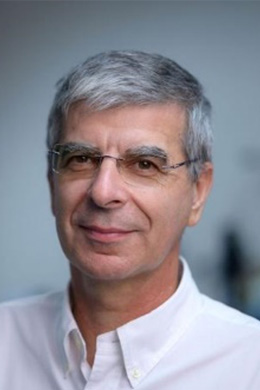
Pierre A. Deymier is Professor of Materials Science and Engineering at the University of Arizona. He is also a faculty member at the BIO5 Institute, of the biomedical engineering programme and applied mathematics graduate interdisciplinary programme. Deymier directs the New Frontiers of Sound research centre, which is funded by the U.S. National Science Foundation, and brings together the research of nine American universities on topological acoustics and its applications.
Deymier completed his PhD at the Department of Materials Science and Engineering at the Massachusetts Institute of Technology in 1985, later joining the University of Arizona.
His research covers a broad spectrum in materials science and engineering, including theory, material modelling and simulation, acoustic metamaterials, phononic crystals, and more recently topological acoustics as well as biomaterials.
In 2023 Deymier was awarded the Bloch Prize from the International Phononics Society for his exceptional and enduring contributions in the field.
Beate Heinemann, particle physics, Germany
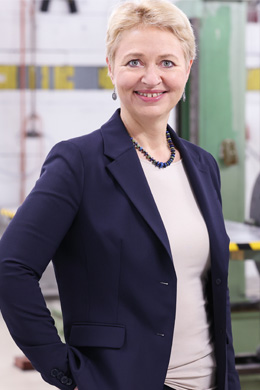
Beate Heinemann is Director in charge of Particle Physics at the German national laboratory DESY. As a physicist, she seeks to understand fundamental particles and the role they played in the evolution of the Universe. Her specialisations include weak interaction, as well as research on dark matter at the Large Hadron Collider (LHC). She was a member of the H1 experiment at DESY’s HERA accelerator, the CDF experiment at Fermilab’s Tevatron, and the ATLAS experiment at CERN’s LHC, and has also worked for the University of Liverpool and the University of California at Berkeley (United States). Heinemann also served as the deputy spokesperson for the ATLAS experiment (French link) from 2013 to 2017. In 2016, she returned to Germany to assume scientific managerial duties at DESY, and to serve as tenured professor at the Albert Ludwigs University of Freiburg. Since 2022 she has been part of DESY management, as well as a tenured professor at Universität Hamburg. She is a member of the American Physical Society, and since April 2023 the holder of an honorary degree from the University of Zurich. She has established close ties with France during the course of her numerous collaborations on experiments since the mid-1990s.
Florian Luca, mathematics, South Africa
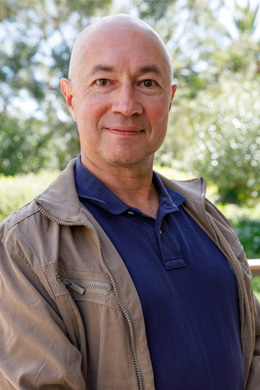
Originally from Romania, Florian Luca completed a PhD in mathematics at the University of Alaska Fairbanks in 1996, and then conducted various research visits, during which he was notably awarded a Humboldt research fellowship by Bielefeld University in Germany. Since 2014 he has served as professor at the University of the Witwatersrand in Johannesburg, South Africa, after spending 14 years at the National Autonomous University of Mexico.
His research essentially focuses on number theory, and more specifically on diophantine equations and arithmetic functions. A specialist in his field, he has co-authored over 500 research articles in mathematics, and in 2005 received a Guggenheim Fellowship as a permanent resident of Latin America. Luca is also involved in the Geometry and Arithmetic International Research Network (IRN GANDA) co-funded by CNRS Mathematics. His current research focuses on the Skolem Problem.
Ardem Patapoutian, neuroscience, United States
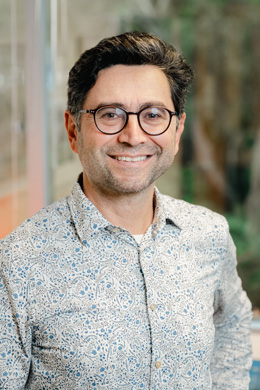
A renowned professor at the Scripps Research Institute, Ardem Patapoutian is a researcher at the Howard Hughes Medical Institute. Born in Lebanon in 1967, he emigrated to California in 1986 for his undergraduate, doctoral, and postdoctoral studies. In his laboratory at the Novartis Research Foundation (San Diego), he notably identified the cold and menthol receptor, as well as the receptor involved in pain transduction. This scientific advance paved the way for much subsequent research, especially in fields connected to inflammatory pain. In 2010 he discovered the Piezo family of mechanoreceptors, which are the cellular transductors for mechanical pressure. The discovery of the Piezo 1 and Piezo 2 ion channels made it possible, among other things, to study the conservation of mechanosensation mechanisms during evolution. A member of the U.S. National Academy of Sciences and the U.S. Academy of Arts and Sciences, in 2020 he was awarded the Kavli Prize in Neuroscience, and in 2021 the Nobel Prize in Physiology or Medicine, along with David Julius, for their discovery of the receptors for temperature, touch, and proprioception1.
Uli Sauerland, semantics and pragmatics, Germany
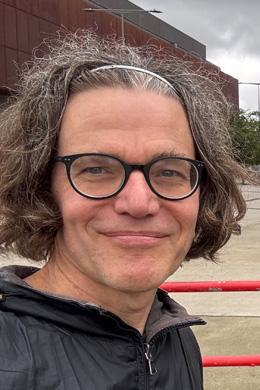
Initially a mathematical logician, Uli Sauerland completed his PhD in linguistics at MIT in 1998, with Noam Chomsky, Irene Heim, and David Pesetsky serving as his supervisors. Since 2005, he has directed the Semantics and Pragmatics Research Area at the Leibniz-Centre General Linguistics (ZAS) in Berlin, for which he served as deputy director. He regularly teaches as honorary professor at the University of Potsdam, and was a guest professor at a number of European, Asian, and North American universities.
The central question of his research project is the following: what does the study of language reveal regarding human thought? This question has been central to the philosophy of language since at least the 17th century. Seeking to reconcile the Leibnizian view of language as a “mirror of the mind” with the ideas of Chomsky and others who believe that language appears, in many respects, to be unsuitable for communication, Sauerland explores the hypothesis that representations of thought can be used for language-based communication only after being radically reduced.
Sauerland’s research includes numerous influential contributions in semantics and pragmatics, and he is also known for his work in the fields of syntax, morphology, and language acquisition. He has conducted fieldwork in the Lesser Sunda Islands and the Amazon, and has also led multiple national and international linguistic research initiatives.
Nicola Spaldin, materials, Switzerland
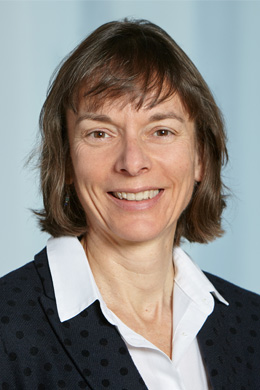
Nicola Spaldin is a Professor of Materials Theory at the Federal Polytechnic School (ETH) of Zurich. After studies in the United Kingdom, she completed her PhD in chemistry at the University of California at Berkeley. She later shifted toward condensed-matter physics, and was a professor for 13 years at the University of Santa Barbara in California, before returning to ETH in 2011. She has made major contributions to the emergence of a new class of materials known as multiferroics, which simultaneously combine ferromagnetism and ferroelectricity. The winner of numerous prizes and awards for her research, including the 2017 L'Oréal-UNESCO Prize for Women in Science, she is a member of the Scientific Board of the European Research Council, as well as the French Academy of Science as a foreign associate in chemistry. She is passionate about teaching science, and received the ETH Golden Owl Prize for teaching excellence. When she is not creating a room temperature superconductor, she likes to play the clarinet, ski and go climbing in the Alps.
2023-2025
Marica Branchesi, astrophysicist, Gran Sasso Science Institute, Italy
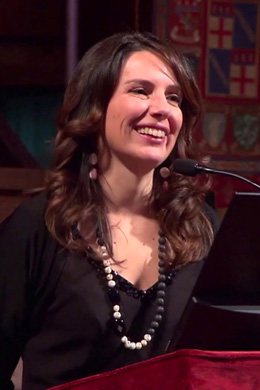
Marica Branchesi is a full professor at the Gran Sasso Science Institute, president of the Scientific Council of Istituto Nazionale di Astrofisica and an associate researcher working at Italy's National Institute for Nuclear Physics. She is a corresponding member of the Accademia dei Lincei. Her scientific interest lies in the (astro)physics governing emission, formation and evolution of black holes and neutron stars. Her research activity is aimed at developing multi-messenger astronomy, which uses electromagnetic and gravitational-wave observations to probe the most energetic transient phenomena in the sky. She is chair of the Einstein Telescope Observation Science Board which is responsible for developing the science of third generation gravitational-wave detectors. She is a member of the Virgo Collaboration and was awarded the 2020 Occhialini Prize for her part in the majestic discovery of the GW1708174 signal. In 2017 she was included in Nature’s annual list of the ten people who matter the most in science and in Time magazine's list of the 100 most influential people in 2018.
Francesco dell’Isola, researcher in theoretical mechanics, Università degli Studi dell’Aquila, Italy
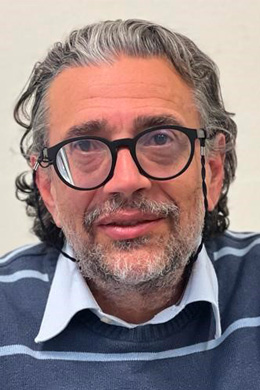
Francesco dell'Isola obtained his master's degree in theoretical physics and a doctorate in mathematical physics from the University of Naples - Federico II. He has taught at the universities of Aix-Marseille, Toulon, Rome, Virginia Tech, Berkeley and Lobachevsky. Currently he is a professor and the director of the International Research Centre for Mathematics and Mechanics of Complex Systems (M&MoCS) at the Università dell'Aquila. Francesco dell'Isola is considered an international reference in the history of mechanics. He also has great expertise in the theory of gradient deformation elasticity which is directly applicable to mechanics and to physics at the micro- and nanoscopic scales. His contributions to fluid mechanics, particularly capillary flows, are also particularly significant. F. dell'Isola was given an international fellowship with Lobachevsky State University in Russia in 2018. He is also a member of the editorial committees of many leading international mechanics and mathematics journals such as Acta Mechanica, Journal of Applied Mathematics and Mechanics or Modern Engineering.
Maurice Herlihy, computer scientist, Brown University, United States
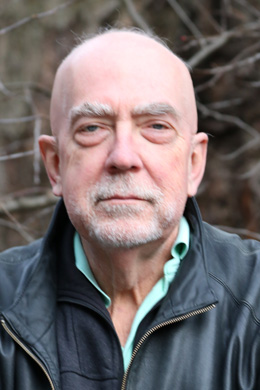
Maurice Herlihy graduated from HarvardUniversity with an AB degree in mathematics and also has a PhD in computer science from MIT. He has been a faculty member in the Computer Science Department at Carnegie MellonUniversity and a member of the research staff at Digital Equipment Corporation's Cambridge Research Lab. In 1994, he joined the Computer Science Department at Brown University where he is currently professor of computer science. His research interests focus around practical and theoretical aspects of concurrent and distributed systems. He played an important role in the development of multiprocessors thanks to the notion of software transactional memory which he jointly invented with J. Eliot B. Moss and which has been applied in the development of multiprocessors and in Intel and IBM processors. He was awarded the 2003 Dijkstra Prize in Distributed Computing, the 2004 Gödel Prize in Theoretical Computer Science, the 2008 ISCA Prize for the Most Influential Paper, the 2012 Edsger W. Dijkstra Prize and the 2013 Wallace McDowell Prize. In 2012, he was awarded a Fulbright Chair in Natural Sciences and Engineering. He is also a fellow of the Association for Computing Machinery (ACM), the National Academy of Inventors, the National Academy of Engineering and the National Academy of Arts and Sciences. In 2022, he was awarded his third Dijkstra Prize.
Anne L’Huillier, atomic physicist, Lund University, Sweden
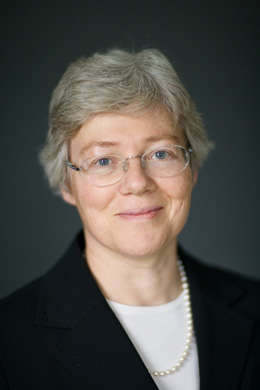
Anne L'Huillier is a physicist who works on the interaction of short, intense laser fields with atoms and was awarded the Nobel Prize for Physics in 2023. She was born in Paris and carried out her studies in France. In 1986, she obtained a post as a researcher at the CEA (Paris-Saclay) before moving to Lund University in 1995, where she is currently Professor of Physics. Anne L'Huillier directs a research group that studies electron dynamics on the attosecond scale to enhance our understanding of chemical reactions at the molecular level. She has been awarded three ERC Advanced grants. Among recent prizes, the Max Born Prize (2021) was awarded to Anne L'Huillier for her "pioneering work in ultrafast laser science and attosecond physics, realizing and understanding high harmonic generation and applying it to time-resolved imaging of electron motion in atoms and molecules". She was awarded the 2022 Wolf Prize in Physics for her "pioneering contributions to the science of ultrafast lasers and attosecond physics".
Alejandro Maass, mathematician, Universidad de Chile, Chile
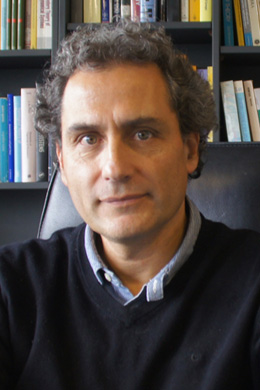
Alejandro Maass studied mathematical engineering at the University of Chile and graduated as an engineer in 1990. He then moved to France, where he obtained his PhD in 1994 from the Luminy Mathematics Institute at Aix-Marseille University before moving to the Department of Mathematical Engineering at the University of Chile the same year. In 2000 he joined the CNRS's first International Research Laboratory (IRL) created in Santiago - the UMI-CNRS Center of Mathematical Modeling (CMM) hosted by the University of Chile. He directed this IRL from 2017 to 2021. He is internationally recognised for his work in ergodic theory and systems biology and in 2009 was awarded the Latin American and Caribbean Mathematical Union prize for his "remarkable work which is stimulating future contributions to mathematics". In recognition of his strong scientific cooperation work with France, he was awarded the Chevalier de l'Ordre National du Mérite in 2007. Today, he works with the TARA Ocean Foundation in Chile, analysing the ocean data collected by the Foundation.
Krzysztof Matyjaszewski, polymer chemist, Carnegie Mellon University, United States
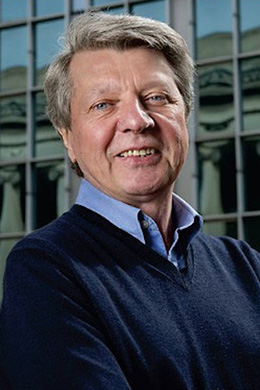
Krzysztof Matyjaszewski is the J.C. Warner Professor of Natural Sciences at Carnegie Mellon University and is internationally recognised as the father of atom transfer radical polymerisation (ATRP), a method of polymer synthesis that has revolutionised the manufacture of these macromolecules. This copper-based catalytic process is very simple to use which makes it easy to prepare macromolecules with complex architectures like multiblock, branched or even star copolymers. Architectures of this kind enable the combination in a single molecule of different properties like hydrophobicity and hydrophilicity, hardness and elasticity, conduction and insulation, optical activity, biodegradability and so on. These copolymers have a wide range of applications in the biomedical, cosmetics and food industries. Professor Matyjaszewsky's team is continuing to develop these polymerisation techniques to make them even more flexible, versatile and eco-responsible so they can be transferred to industry. He is also working on the possibility of adapting these to the functionalisation of surfaces or nanoparticles.
Leonid Alex Mirny, biophysicist, Harvard, United States
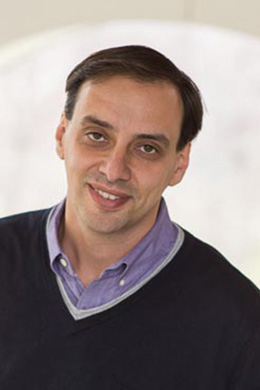
Leonid Mirny is a Distinguished Professor at the Institute of Medical Sciences and the Department of Physics at the Massachusetts Institute of Technology (MIT), a Fellow of the American Physical Society and also an Associate Member of the Broad Institute. In 2015 he was appointed co-director of the 4D Nucleome Center for Structure and Physics of the Genome which is funded by the National Institutes of Health. His research combines physics-based approaches and genomic data analysis to work towards solving fundamental problems in biology. The central focus of his research is to understand more about the processes that govern the three-dimensional organisation of long DNA molecules and also to elucidate how this organisation regulates the genome's proper functioning or, conversely, can lead to its dysfunction in the event of illness. In 2021 and 2022, he appeared in the Highly Cited Researchers ranking which lists the top 0.1% of the most frequently cited researchers in the world over the last ten years. He was also appointed to the Blaise Pascal Chair of Excellence, spending fifteen months working at the Institut Curie in 2021-2022.
Jeffrey F. Morris, professor of chemical engineering, City College of New York, United States
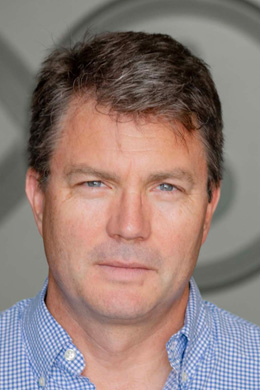
After earning his Ph.D. degree from Caltech and working as a postdoctoral fellow for Shell in Amsterdam in 1995, Jeff Morris joined Georgia Tech as an Assistant Professor (1996-2002). Subsequently, he worked with Halliburton as the Senior Scientific Advisor (2002-2004) and joined the City College of New York (CCNY) in 2005 where he has been since. Professor Morris served as the Chair of Chemical Engineering at CCNY (2013-2016) and acting director of the Levich Institute (2015) before being appointed as its director in January 2016 and continuing to the present. The list of past directors of the Benjamin Levich institute includes eminent engineering scientists such as Benjamin Levich, Andreas Acrivos and Morton Denn. Jeff Morris has over 12000 citations (Google Scholar), several patents and has authored a book titled 'A Physical Introduction to Suspension Dynamics', with the CNRS research professor Elisabeth Guazzelli. He is an Associate Editor of the Journal of Fluid Mechanics, and is on the Editorial Boards of 'Rheologica Acta' and the 'International Journal of Multiphase Flow'. He has received several honours and awards, including the Journal of Rheology Publication Award (2015 and 2020), the 2019 Corrsin Award from the American Physical Society, the 2022 Weissenberg Award from the European Society of Rheology and the 2023 Bingham Medal of the Society of Rheology.
Saul Perlmutter, physicist, University of California, Berkeley, United States
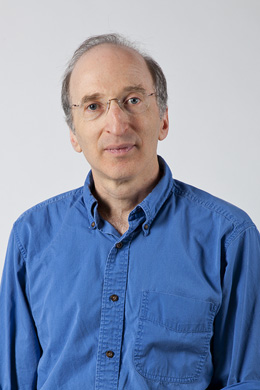
Saul Perlmutter is an American scientist who specialises cosmology and the joint winner of the 2011 Nobel Prize in Physics for his discovery of the accelerating expansion of the Universe. He is Professor of Physics at the University of California at Berkeley where he holds the Franklin W. and Karen Weber Dabby Chair and works a senior scientist at the Lawrence Berkeley National Laboratory (LBNL). Mr Perlmutter is the leader of the international Supernova Cosmology Project, director of the Berkeley Institute for Data Science and executive director of the BerkeleyCenter for Cosmological Physics. His undergraduate degree was from Harvard and his PhD from UC Berkeley. In addition to other awards and honours, he is a member of the National Academy of Sciences and the AmericanAcademy of Arts and Sciences and a fellow of the American Physical Society and the American Association for the Advancement of Science. Perlmutter has also written popular science articles, and has appeared in numerous PBS, Discovery Channel, and BBC documentaries. His interest in teaching scientific-style critical thinking for scientists and non-scientists alike led to the development of his Berkeley courses 'Sense and Sensibility and Science' and 'Physics & Music'.
Laurajane Smith, researcher in heritage and museum studies, Australian National University, Australia
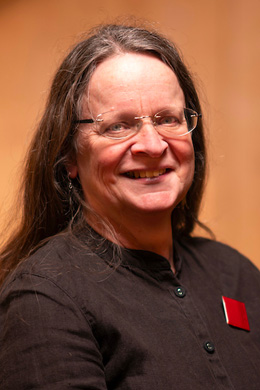
Laurajane Smith is the Director of the Centre for Heritage and Museum Studies based in the Research School of Humanities and the Arts at the AustralianNational University. She is a Fellow of the AustralianAcademy of Social Sciences and an affiliate member of the Cambridge Heritage Research Centre in the UK. In 2010-2012, she worked on the creation of the Association of Critical Heritage Studies. She is the editor-in-chief of the International Journal of Heritage Studies and co-editor, with Dr Gönül Bozoğlu, of the book series 'Key Issues in Cultural Heritage' published by Routledge. Her books include 'Uses of Heritage' (2006) and 'Emotional Heritage' (2021). She has also edited many collective works, including 'Intangible Heritage' (2009) and 'Safeguarding Intangible Heritage' (2019), both with Natsuko Akagawa, along with 'Emotion, Affective Practices, and the Past in the Present' (2018, with Margret Wetherell and Gary Campbell) and 'Heritage, Labour and the Working Class' (2011, with Paul A. Shackel and Gary Campbell). Laurajane Smith has received many awards including an honorary doctorate from the University of Antwerp (Belgium) in 2018 for her scientific merit.
